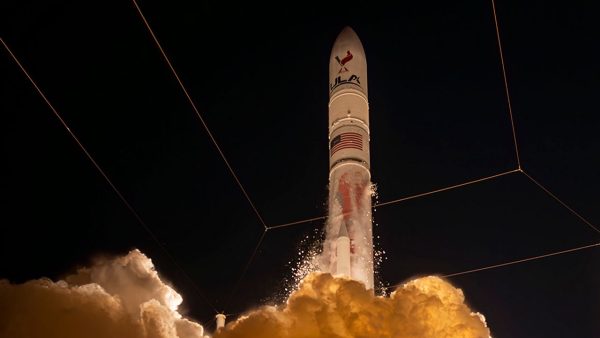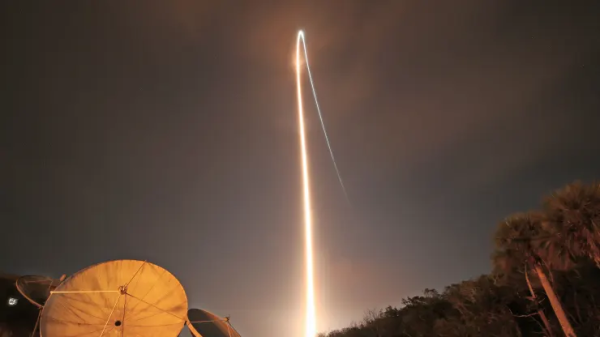A Monumental Earth Day

Courtesy of Flickr
April 24, 2019
Earth Day is celebrated on April 22nd each year to recognize support for environmental protection. It was first celebrated in 1970 with Gaylord Nelson, former US Senator, as its first supporter. It now has become a worldwide day of recognition with events coordinated by the Earth Day Network.
The importance that Earth Day serves in today’s society is more evident than ever. From songs educating the youth about climate change to proposed deals promising a better and healthier environment, Earth Day serves as a reminder for the world to continue their efforts to strive for a habitable and stable home for humanity.
Released on April 17th, 2019, Lil Dicky, American rapper, released the song, “Earth,” that is essentially a call to action. Knowing his audience is primarily young adolescents, he chose to use his platform to educate his fan base on the pressing issues of pollution and climate change, two terms that go hand in hand. To generate an even wider reach, he collaborated with more than 30 acclaimed artists including Justin Bieber, Miley Cyrus, and Snoop Dogg.
The chorus sings, “We love the Earth, it is our planet. We love the Earth, it is our home.” The lyrics are set out to inspire others to follow in his footsteps and support the efforts being made within the Earth Day celebration. All of the proceeds go towards the Leonardo DiCaprio Foundation, a group that focuses on global warming, preserving Earth’s biodiversity, and supporting renewable energy.
As the public becomes more aware of the scientific evidence that supports the idea of climate change, many are agreeing that humanity needs to change their way of thinking in the sense of gas emissions and pollution efforts. According to the American Communities Project (ACP) typology within Seminole County, 69% believe that climate change is happening and 53% believe that it is human-caused. Both statistics are below the national average for Urban Suburbs.
With America divided on the controversial topic of climate change, it is hard to come to a consensus on how to solve the world’s most pressing and threatening issue. Rep. Alexandria Ocasio-Cortez and Sen. Ed Markey, both co-sponsors of the Green New Deal have led an ongoing discussion among congress with their proposal. The Green New Deal promises to reinvent the economy and have it built entirely on renewable energy sources when today it primarily runs on fossil fuels.
Along with the promise for a new economy, it also addresses poverty by aiming much of the improvements at disadvantaged communities and rebuilding the infrastructure in all of America. To gain additional support, the Green New Deal calls for universal health care, increased minimum wages, and the prevention of lofty business monopolies.
The flaw in the proposal lies within the planning. The deal offers little instruction on how the government should get to the promises. It could cost as much as $93 trillion, according to a new study co-authored by the former director of the nonpartisan Congressional Budget Office. That would double the tax pay revenue as well.
Another mishap is that in order to obtain the materials needed to make America completely renewably dependent, the government would have to mine, ultimately reversing the wanted effects. In fact, to construct wind turbines, deforestation has to occur. Renewable energy is extremely inconsistent as well. Renewable energy is only responsible for 15% of the U.S. electricity generation in 2016, with the bulk coming from hydropower.
Some energy officials suggest nuclear power plants are the way to go, as they “are generating more than one-third of Western Europe’s electricity and 440 in all are supplying one-seventh of the world’s [electricity]…” wrote James Lovelock in his Mar. 2005 article “Our Nuclear Lifeline,” published in Reader’s Digest.
“We know nuclear energy is safe, clean and effective because…radiation is part of our natural environment and we can live with it. All of us are exposed to natural radioactivity every minute, mostly from rocks and soil,” writes Lovelock.
While the efforts and adaptation to the reality of climate change have increased within recent years, they do not draw near the scale considered necessary to avoid notable damages to the economy, earth, and human health in the coming decades, according to a government-funded climate change study.
National Geographic states that “humans have pumped enough carbon dioxide into the atmosphere over the past 150 years to raise its levels higher than they have been for hundreds of thousands of years.”
The government-funded study found that increasing rates of air and water temperatures as well as changes in rainfall are intensifying droughts, increasing heavy storms, and causing a great decline in the overall quality of water. The rising of temperatures continue to add to the stress on water supplies and have negatively affected the access to drinkable water in the United States.
The study also discovered that “climate change is also projected to alter the geographic range and distribution of disease-carrying insects and pests, exposing more people to ticks that carry Lyme disease and mosquitoes that transmit viruses such as Zika, West Nile, and dengue, with varying impacts across regions.”
The greenhouse effect, which accounts for the climate change we are seeing today, refers to the process by which radiation from a planet’s atmosphere warms the planet’s surface to a temperature above what it would be without its atmosphere. The four major greenhouse gases that contribute to this process are: water vapor, carbon dioxide, methane, and ozone.
The enhanced greenhouse effect is the continued process of the greenhouse effect but with the help of humans. Human activity is guilty of contributing to over 410 million ppm (parts per million), according to NASA research studies. The consequences that climate change imposes on the human race are endless. It even extends beyond humans. The rapid loss of species scientists are seeing today is estimated by experts to be between 1,000 and 10,000 times higher than the natural extinction rate (if humans were not around), according to the World Wildlife Fund.
The fight to preserve these organisms is, however, increasing with awareness. Many organizations are being founded upon the principles of environmental protection. Global warming has even caused such substantial damage to the Great Barrier Reef that scientists say its coral ecosystems may never recover. According to a study published in the journal Nature, coral in Australia’s Great Barrier Reef has declined by 89% due to mass bleaching, a response to increased sea temperatures, in 2016 and 2017.
World leaders are proposing new agreements, ones like the Green New Deal to solve this global issue. Whether it may be electrical cars or nuclear power points to solve the problem, humans are more aware of the threats and consequences and therefore are becoming more receptive to the idea of climate change being a reality.



















